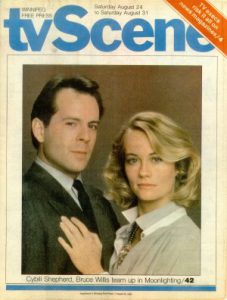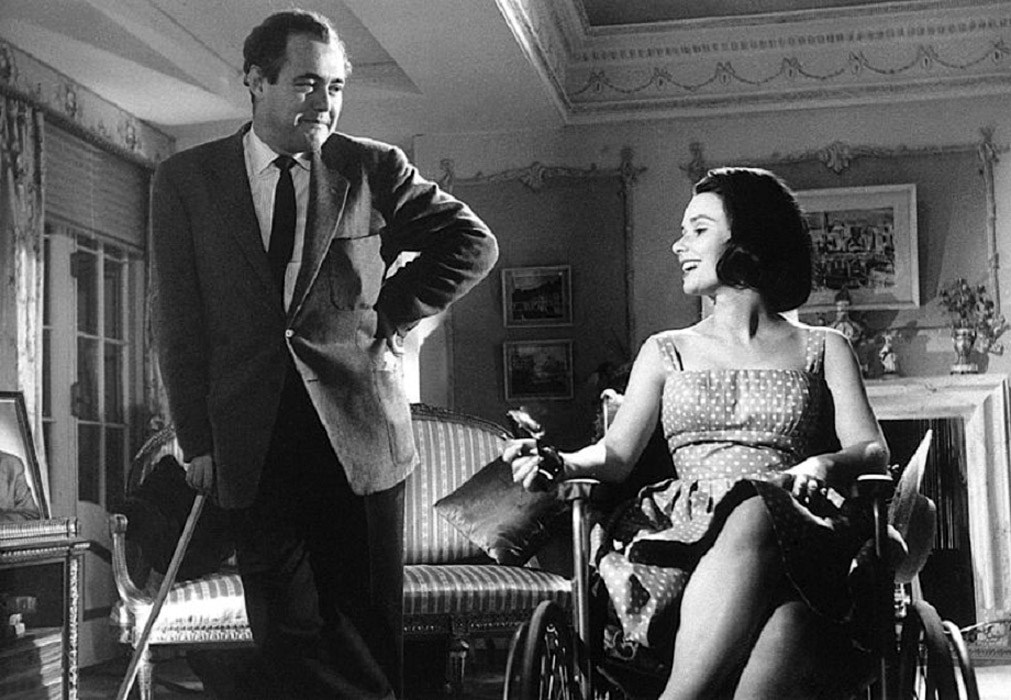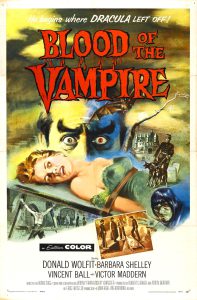As far back as I can remember, I always wanted to watch scary movies. Before I could even read the TV listings, I asked my Dad to tell me whenever there was a scary movie coming on the TV. This is how I first saw films like King Kong (1933) Frankenstein (1931) Dracula (1931) and Phantom of the Opera (1925). Sometimes a movie was on too late at night for me to stay up and watch. I remember one morning my Dad saying “It’s a good thing you didn’t see that movie last night. It was pretty scary.” This only made me feel like I’d missed out. Scary is what I wanted. I asked my Dad for details, hoping that hearing about it would give me the same thrill that watching it would have. All he would say was that it had something to do with a house. To this day I don’t know what that movie was.
I also remember one Sunday afternoon, my Dad calling me up from the basement because something scary was about to start. I sat in front of the TV and watched the first twenty or thirty minutes of a movie that just didn’t seem to be going anywhere. It was about a family living on a farm. They had a bunch of horses inside a big old barn, and one night that barn caught fire. The horses were trapped inside, going crazy. As the family formed a chain and passed buckets of water from the well to the burning barn, I remember my Dad shaking his head and saying “I think I was wrong. This isn’t a scary movie.”
I refused to give up hope. “Maybe the horses will die and then the barn will be haunted,” I suggested.
My Dad looked skeptical, but he said “Maybe.”
I don’t remember if the family saved the horses or not. I do remember that nothing much seemed to be happening after the fire, and eventually I gave up on watching that movie. My Dad felt bad for giving me a bum steer. “The TV listings made it sound like it would be scary…” he explained.


In those days, we didn’t have a lot of places we could look if we wanted to find out about a movie that was coming on TV. If it was a famous movie, like Dracula, Frankenstein, etc., then we already knew what we were getting into. But if it was a title we’d never heard before, all we had to go on was a one or two sentence description published in our local newspaper’s TV guide (in our case, called TV Scene). Sometimes the descriptions weren’t very accurate. One famous example from several years later (and not from our local paper) was this description of The Wizard of Oz (1939):
Transported to a surreal landscape, a young girl kills the first person she meets and then teams up with three strangers to kill again.
Almost sounds like a horror film, doesn’t it?
The other thing our local TV guide did, was to assign a star rating to all movies. Really good, classic movies like Casablanca (1940) or The Maltese Falcon (1939) would tend to get three or four stars (four being the highest rating possible).
One day we found a listing for a movie called Scream of Fear (1961). I don’t remember what the description said, but it was clear from the title alone that this was a scary movie. The only problem was that the TV Scene only gave the movie one star! One star?! I’m not sure if I had ever seen that before. Boring, unfunny comedies tended to get two stars. How bad did a movie have to be to get one star?
My Dad and I were unsure if we should watch this movie. With a rating of one star, it was bound to be terrible. But, we had suffered through the first part of the horse fire movie and turned it off. We figured we could stop watching if this movie was as bad as the TV listings claimed.
To make a moderately long story somewhat shorter, we both loved Scream of Fear, and we kept commenting to each other as we watched, with variations of “How can this movie only get one star?” and “What’s wrong with the guy who reviewed this movie?”
And that brings up a good question: Just who were these guys who wrote blurbs and assigned star ratings to movies in local TV listings? Did they really watch all of the movies? Or did they just make assumptions based on the type of movie, or it’s reputation (or lack thereof)?
I think it’s fair to say that I never trusted a star rating in the TV Scene again.
My Dad and I judged Scream of Fear to be an excellent movie, with suspense, atmosphere, mystery, and – yes – scares. It’s been compared to the much lauded French film Diabolique (1955), which is a film my Dad told me to tape off of late night TV once we had a VCR. We also loved that movie, and I think we could see the comparison, but each was still their own film. Scream of Fear is a Hammer film (perhaps the first one I ever saw, I’m not sure…) written by Jimmy Sangster, who wrote (and directed) a lot of films for Hammer. It was directed by Seth Holt, who is somewhat lesser known (at least to me), perhaps because he died young (at age 47, in 1971).

Jimmy Sangster on the set with Susan Strasberg,
I wanted to see Scream of Fear again for many years, but for some reason it was hard to come by. I never saw a VHS tape that I could rent or buy. And it was never again listed in the TV guide. I started to wonder if it had vanished into the ether, or if perhaps my Dad and I had imagined watching it all those years ago. I found other Hammer films like Paranoiac (1963), Nightmare (1964), and Fear in the Night (1972) – all written by Jimmy Sangster, by the way – which seemed similar, and I wondered if I could be remembering the title wrong. And yet none of these films were quite the right one, upon closer examination.
When I bought books like Terror On Tape by James O’Neill, I was relieved to see that Scream of Fear was included, and therefore not a figment of my childhood imagination. O’Neill gives the movie three stars, by the way, and calls it “a first rate shocker.” Too bad he wasn’t rating movies in my local newspaper…
Seeing Scream of Fear again after all these years only confirmed my opinion of it. I’m sure that I would list it as a personal favourite if I had managed to see it more often over the years. I look forward to doing exactly that in the future, whether on a #FridayNightAtTheHomeDriveIn, or any other day of the week. Scream of Fear (1961) is a #Certified #NotQuiteClassicCinema classic!
 Blood of the Vampire (1958) by #HenryCass
Blood of the Vampire (1958) by #HenryCass


